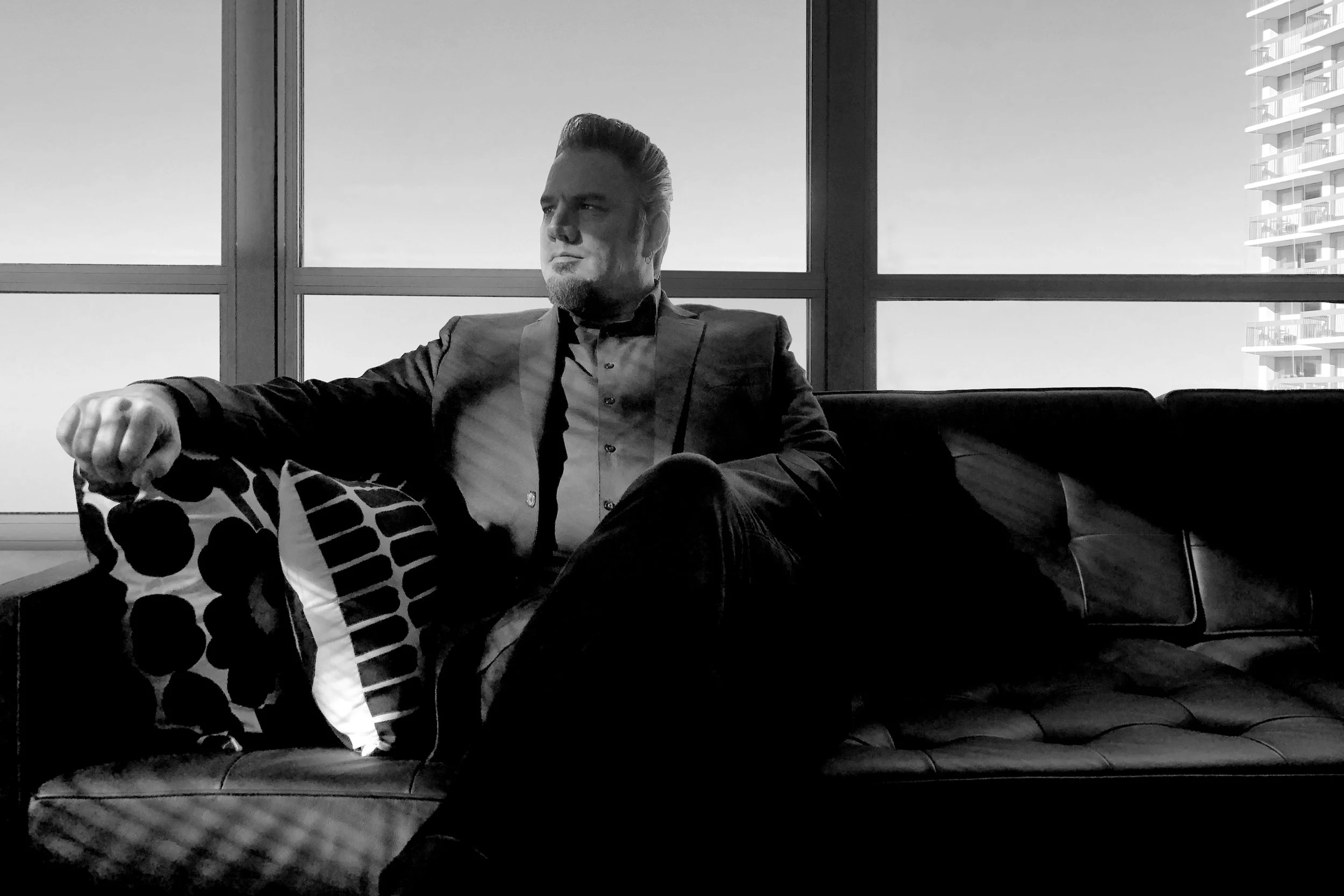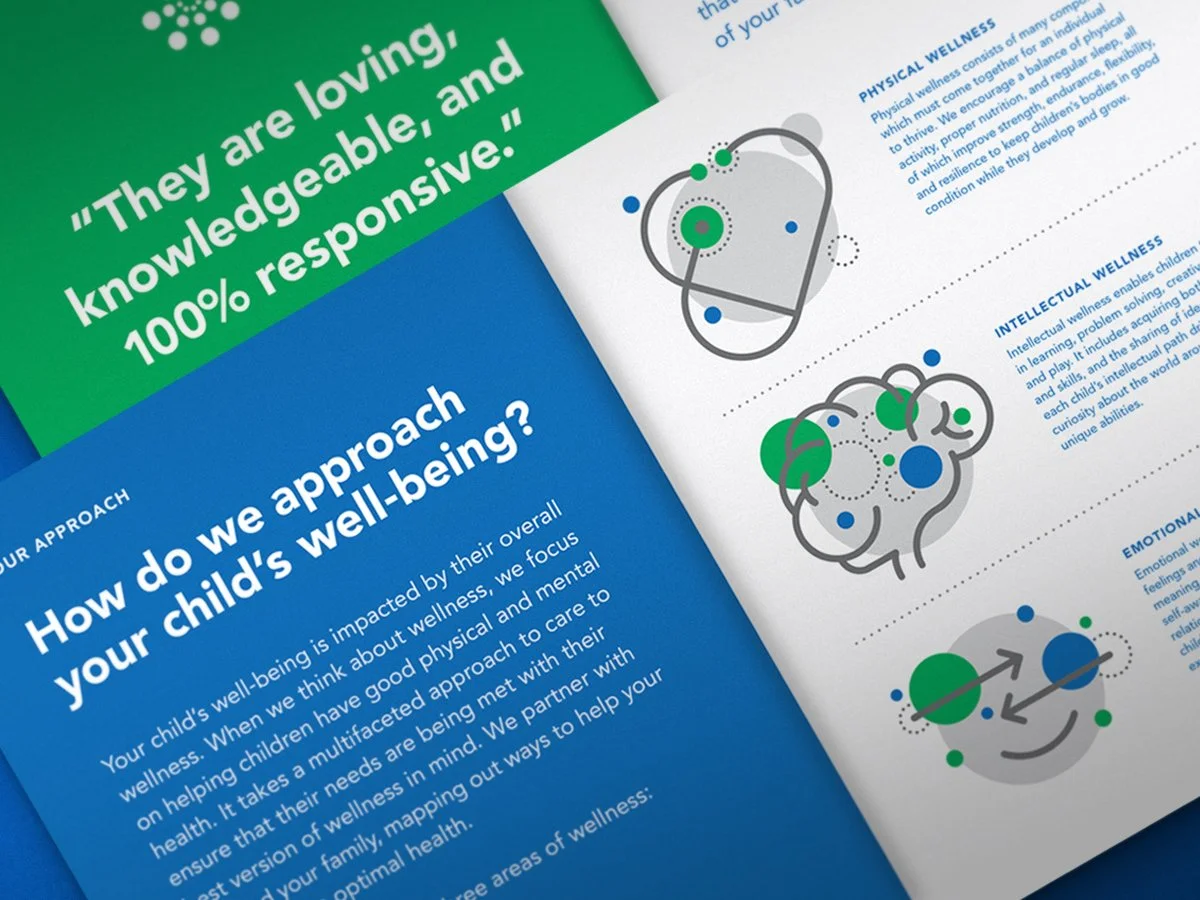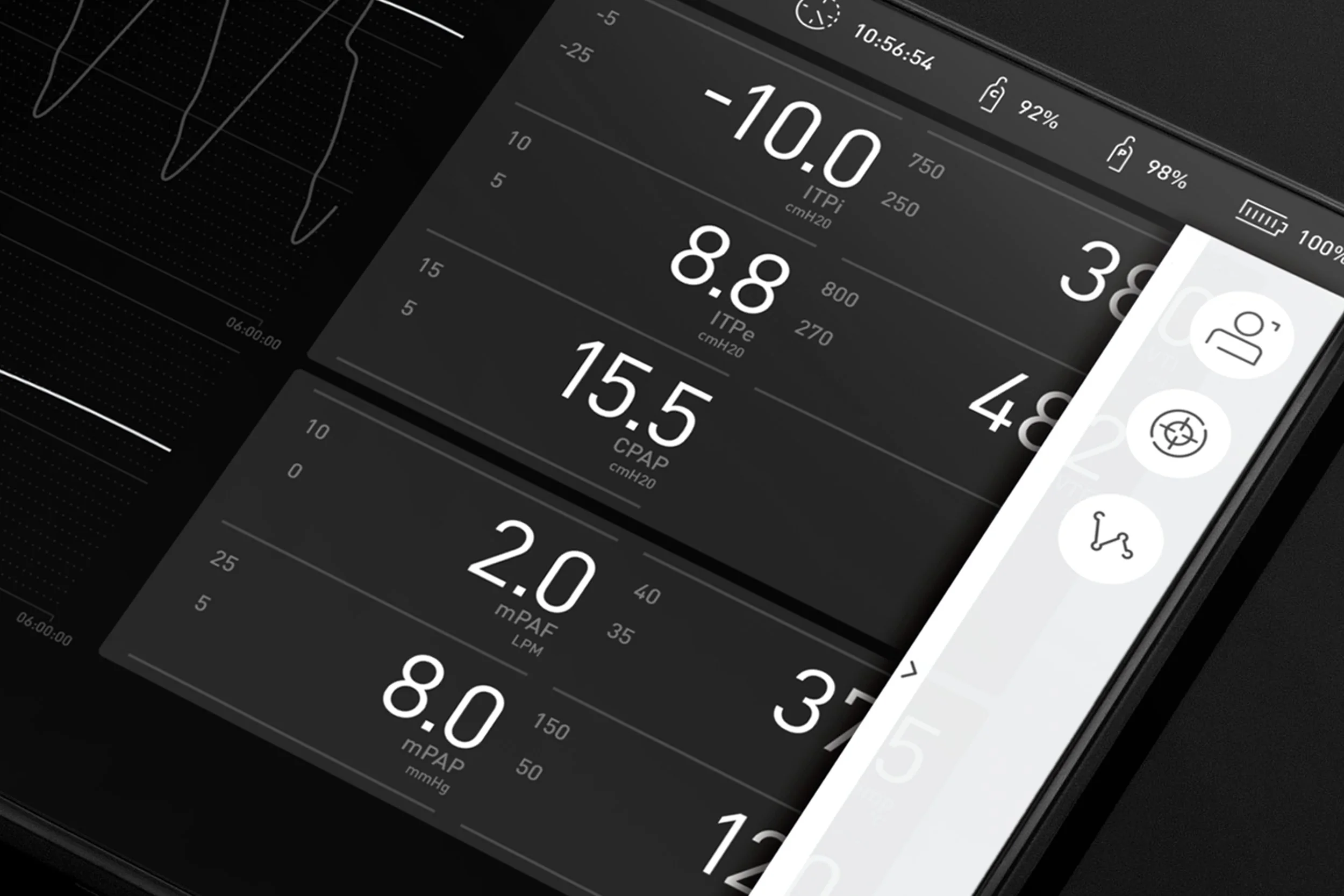Celebrating Five Years of Building Better Brands
Terry Lawrence, founder and principal of +Intention
Back in 2017, we started +Intention, a strategic branding and design studio, to show that the right branding can help businesses realize their full potential. A lot can happen over five years. As a way to reflect on our story thus far, we sat down with the principal of +Intention, Terry Lawrence, to look back on all that’s been accomplished since the studio’s inception.
Q: Let’s start from the beginning. What was the thinking behind founding +Intention?
TL: When we decided to form +Intention, we wanted to take our experiences of working with big brands—large consumer companies and global pharmaceutical companies—and bring that problem-solving approach to small and mid-market businesses of all types, for whom brand strategy and design may feel out of reach.
Be it a healthcare startup, a professional services company, a technology organization, or an academic or civic institution, we wanted to show what a purposefully built brand could do for a company or organization, regardless of their size. And that’s really at the core of what we do. We help companies solve complex business challenges through purposeful brand solutions.
Q: What was it like figuring out your way of working?
TL: Our approach was born out of our backgrounds. My former partner came from an account services and brand strategy perspective while I came from a high design and strategic problem-solving perspective. Together, we combined those points of view and brought them forward to define our way of thinking about branding and design.
When it comes to strategy and design, it’s not just about one thing or the other. You need to take a comprehensive, purposeful approach when building a brand. You have to understand the problem you’re solving. You have to glean insights from your client and their customers. You have to identify a position your brand can own and an opportunity where it can thrive. And you have to execute it with excellence both visually and verbally. All of that is important when trying to express the core identity of a company through its brand and create a meaningful connection with an audience.
So when it comes to our way of working: we listen, we learn, we debate, and then we create.
In the end, the success of a brand really boils down to two things: credibility and trust. If you lack credibility—if you don’t look and sound credible—then you will lose trust. And when you don’t have the trust of your customer, you’ve shaken their confidence in you and have likely missed an opportunity to get their business.
“So when it comes to our way of working: we listen, we learn, we debate, and then we create.”
Q: You mentioned expressing a business’s core identity. What does that actually look like in practice?
TL: When working with our clients, we begin by trying to uncover something that’s at the center of who they are and what they do. We’re looking for that human truth that we can build around. That’s the starting point of laying the foundation of their brand and visual identity—because we want their brand to be an authentic reflection of who they are as a company or organization.
A good example of this is when we worked with Pediatric Associates of the North Shore, or PANS. They’re a small pediatric practice in the Chicagoland area. They’ve been around for over 60 years. They’re a valuable part of that community. At the time we started working with them, they hadn’t experienced growth in recent years. In addition, they were seeing increasing competition from larger medical institutions.
Now, if you’re a family who had been there, it was very clear why they were a mainstay in the community. They provided excellent care with a patient-focused approach. But outside the walls of the office, you wouldn't know that. And we wanted that to change.
So we repositioned them and created a brand that inspired a new conversation on care—one focused on wellness rather than illness—that was centered on the best interest of the child. And we articulated that idea with the brand platform, “Helping Families Thrive.”
From there, we designed a visual identity that was bright and energetic—kid-friendly, but not childish. It felt like them. It expressed who they were as a team and reflected how they engaged with their families. And we carried that messaging approach and visual identity across stationery items, patient brochures, environmental graphics, journal ads, social media templates, and staff training. In the end, every way they presented themselves, from their online presence to the waiting room, consistently felt like the warm experience they provided.
What was great was that one year after launching their new brand identity, they saw positive growth for the first time in five years.
Q: That project covered a great deal of design work and strategy. Can you talk about what a more strategy-oriented project looked like?
TL: Sure. We recently completed a multi-year engagement with a Fortune 500, global healthcare company. We were brought in to map out a 10-year, market-shaping, leadership strategy for one of their main divisions. And out of that strategy came a number of outputs we developed: communication platforms, advertising and marketing, employee training, etc. Most interesting, in my opinion, was our role in developing and facilitating an initiative to engage with industry professionals—physicians, nurses, patient advocacy groups, payors, and academicians—consisting of monthly work sessions and an annual summit, all for the purpose of addressing underlying issues in healthcare and unmet needs of patients.
“Your insights are incredibly rich. You listen, you digest complicated information, and distill it down to what’s really important.”
Client testimonial from initiative
Q: Can you talk more about the relationship between brand positioning and identity design when it comes to building a brand?
TL: That’s a great question. Often, people focus on specific components of the brand-building process and lose sight of the through line that should be present in the final product.
Take our work on creating the NightWare brand, for example. It was the first of its kind, advanced digital therapeutic system specifically designed for the treatment of Nightmare Disorder and nightmares associated with PTSD. It had been awarded breakthrough status by the FDA as a means of reducing nightmares and restoring sleep. And for this initial phase, they were focused on helping active duty military personnel and veterans, meaning, they were in conversation with not just physicians, but also government officials from the United States Department of Veterans Affairs and the Department of Defense. We had to consider a number of variables with that project. It wasn’t just about designing something that looked nice. The way that product was positioned would be critical to its adoption.
So, here’s what we were dealing with: it’s a new product to market; it’s a digital medtech device—a category frequently viewed by physicians with skepticism; it’s addressing Nightmare Disorder related to PTSD—a condition highly-stigmatized within the target audience; and it has to convey technical data and circumvent cultural perceptions in order to succeed. That’s a heavy lift. So we knew we had to get the positioning just right.
Additionally, the visual identity not only had to take these factors into account, but needed to build upon them and establish a visual vocabulary that would connect with government and military officials, physicians, and patients alike.
So, here’s what we wanted to accomplish with the design: allude to the nature and environment of the digital therapeutic platform—help set the context for the customers; reflect the functionality of the platform’s AI and signaling mechanism—both inform and educate people on how it works; fold in meaningful aspects of the target audiences’ culture; and convey clinical confidence and trust in the product.
We thought about the impact of what it means when you can restore something—to return to a more natural state and regain control of a situation. Consider the possible benefits if you can help improve the quality of sleep for individuals. It led us to the brand platform, “Take sleep back. Move life forward.”
From there, we developed a visual identity that leveraged certain cues that had different, yet relevant meaning for military and civilian audiences. Purple symbolizes “all services” in the military, as well as great sacrifice and bravery, as embodied in the Purple Heart. For civilian audiences, deep purple feels nocturnal and restful. And the visual motifs of the brandmark suggest the series of pulses sent through the watch to interrupt the nightmare, as well as sleep wave patterns referenced by physicians.
In the end, we believe we addressed our key considerations and met our target objective. We had a brand positioning and a visual identity that connected with our audience. And when these elements work in harmony, they lend credibility through the brand to both the company and the product.
“In the end, the success of a brand really boils down to two things: credibility and trust.”
Q: What other benefits can branding bring outside of business growth?
TL: Interesting question. True, when working with clients on their brands, we often discuss growth as being the primary goal of their businesses. But, a few other key things companies are looking to create is culture and community—and that can be applied to noncommercial situations.
One example is a branded speaker program I developed and we hosted at The Mid-America Club in Chicago called (Next)Woman Up. It was the lead component of a four-part, branded program I proposed and launched with my former partner through the Women’s Committee at the Club. The overall purpose was to create a community of women who may find inspiration in each other to drive cultural change and personal growth. We organized our programming into three categories: professional, social, and philanthropic.
For (Next)Woman Up, I wanted to create a platform that would have social relevance and contribute to positive change—a desire shared by both my former partner and me. We focused that initiative on a conversation around the need to redefine what’s possible for the experience of women in today’s world. Each month, we invited a different successful and inspiring female influencer, leader, or activist to participate, and my former partner would interview them and facilitate a conversation. For example, we hosted Betsy Ziegler, the CEO of 1871; Illinois Supreme Court Justice, Anne Burke; former President of the WNBA, Laurel Richie; and Liz Dozier, the founder & CEO of Chicago Beyond.
And at the conclusion of each event, attendees were invited to ask questions and engage in a dialogue with the speakers. Our largest session drew over 90 attendees. By the end of that year, we had cultivated a truly unique community of people who felt empowered and engaged. We loved running that initiative.
Q: What have been some of the highlights over the last few years?
TL: Well, what I just discussed was certainly one. But overall, it’s been great meeting and working with new people, whether that be clients or folks who have joined our team over the last five years.
We’ve been fortunate to partner with a number of clients who are very mission-focused, and it’s been satisfying to help them make an even greater impact on the world. Whether that’s a nonprofit organization like Facing Forward to End Homelessness or Gateway Foundation, a commercial client like Tulip Tree Gardens (a wellness farm), or a start-up, medtech company like Tevosol or Northernmost (both, of whom, are developing machines to preserve and transport donor organs), we’ve been privileged to learn so much about each of their processes and play our role in helping them further their brands.
I’m particularly proud of our team’s work on the larger healthcare initiative I mentioned earlier. We dug deep into ourselves to bring that effort to life—and we did so with a small, yet dedicated team. I will be forever grateful to everyone here who had a hand in that work.
Of course, it’s always nice when our design work is recognized in award competitions. Since opening our doors, we’ve received 11 design awards, including a Best of Show from the Creative Communication Award (C2A) competition and a few top Winners in others. Most recently, our branding and design work for NightWare won a Silver Award from the Davey Awards. Considering the level of commitment and effort that goes into each project we create, that recognition from our peers goes a long way in adding to our overall satisfaction of a job well done.
Q: What are some things from the last five years that you want to take into the next five years?
TL: Well, we certainly want to build on our successes and learnings from the past five years and apply them to new challenges. One of the best parts about this job is digging in and becoming an “expert” quickly on a new company or industry. We get to bring in our outside perspective, work with our clients, and help them see things in a new way. That’s truly where our value lies.
On top of that, I’d love to see us increase our design opportunities. Design is my passion. I want to see us continue to move in that direction.
As the studio grows, I hope we continue to attract a good group of like-minded individuals who are committed to the work they do. As an owner, I've been intentional about creating space for people to feel comfortable and be their true and authentic selves. That feeling contributes to people’s confidence in being able to bring their best to their work. That’s important to me.
We’ve been fortunate to grow our business while growing our relationships. We thank all of the people—the colleagues, the clients, and the partners—who have played a part in our journey.
Terry is the founder and principal of +Intention. A former agency and design studio Creative Director with over 20 years experience, Terry combines both his classically trained, high-design background and his process-driven, strategic approach to solving brand challenges.
Reach out to Terry at terry.lawrence@workwithintention.com to learn more about how +Intention can support your brand and business.











